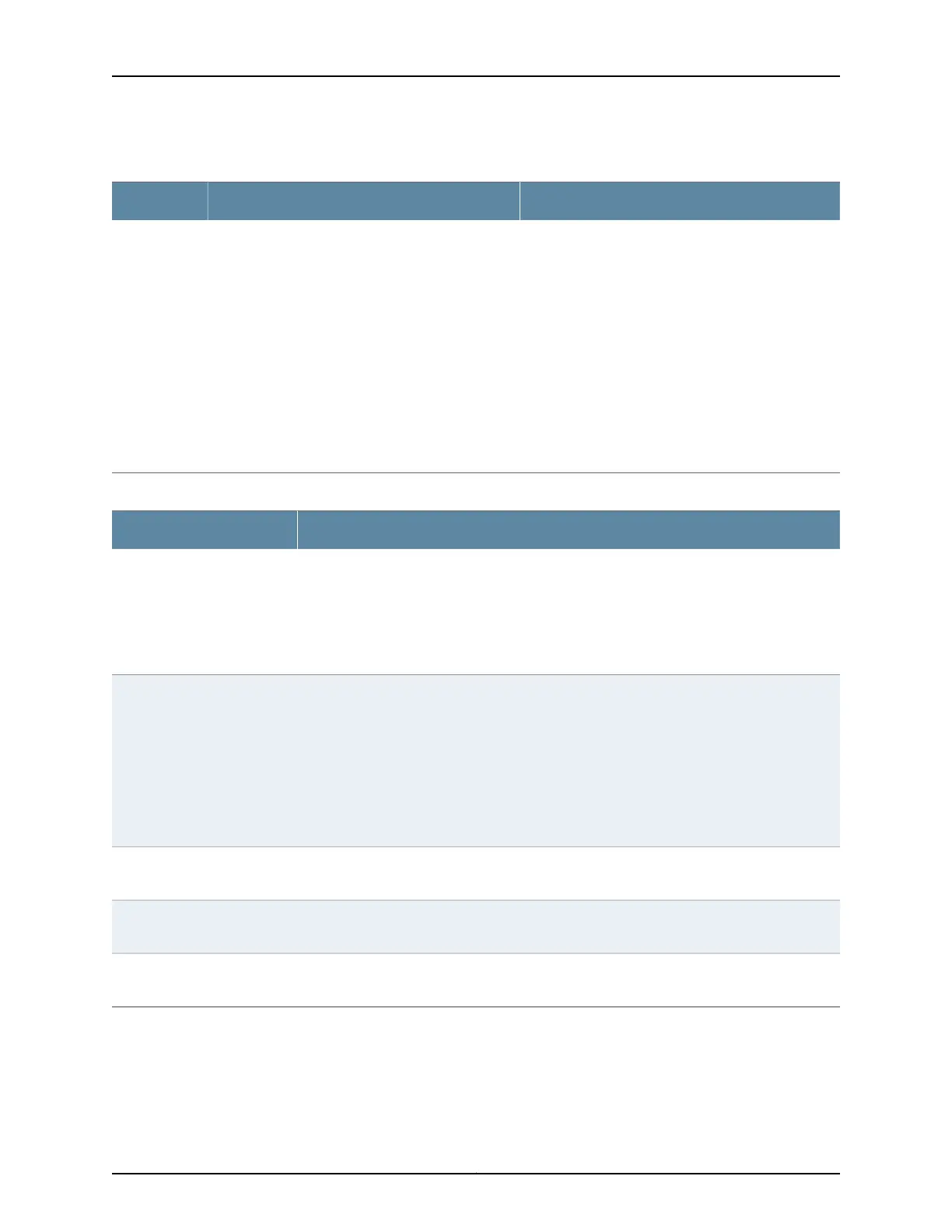Table 56: Port Edit Options (continued)
Your ActionFunctionField
1. Select the IPv6 address check box to specify an
IPv6 address.
2. Type an IP address—for example:
2001:ab8:85a3::8a2e:370:7334.
3. Enter the subnet mask or address prefix.
4. Click OK.
NOTE: IPv6 address is not supported on EX2200
and EX4500 switches.
Specifies an IPv6 address for the interface.
NOTE: If the IPv6 Address check box is cleared, the
interface still belongs to the inet family.
IPv6 Address
Table 57: Recommended CoS Settings for Port Roles
Recommended SettingsCoS Parameter
There are four forwarding classes:
•
voice—Queue number is set to 7.
•
expedited-forwarding—Queue number is set to 5.
•
assured-forwarding—Queue number is set to 1.
•
best-effort—Queue number is set to 0.
Forwarding Classes
The schedulers and their settings are:
•
Strict-priority—Transmission rate is set to 10 percent and buffer size to 5 percent.
•
Expedited-scheduler—Transmission rate is set to 30 percent, buffer size to 30 percent, and
priority to low.
•
Assured-scheduler—Transmission rate is set to 25 percent, buffer size to 25 percent, and
priority to low.
•
Best-effort scheduler—Transmission rate is set to 35 percent, buffer size to 40 percent, and
priority to low.
Schedulers
When a desktop and phone, routed uplink, or Layer 2 uplink role is applied on an interface, the
forwarding classes and schedulers are mapped using the scheduler map.
Scheduler maps
Imports the default ieee-802.1 classifier configuration and sets the loss priority to low for the
code point 101 for the voice forwarding class.
ieee-802.1 classifier
Imports the default dscp classifier configuration and sets the loss priority to low for the code
point 101110 for the voice forwarding class.
dscp classifier
Related
Documentation
Configuring Gigabit Ethernet Interfaces (CLI Procedure)•
• Configuring Gigabit Ethernet Interfaces (CLI Procedure)
• Monitoring Interface Status and Traffic on page 198
115Copyright © 2017, Juniper Networks, Inc.
Chapter 9: Interfaces
